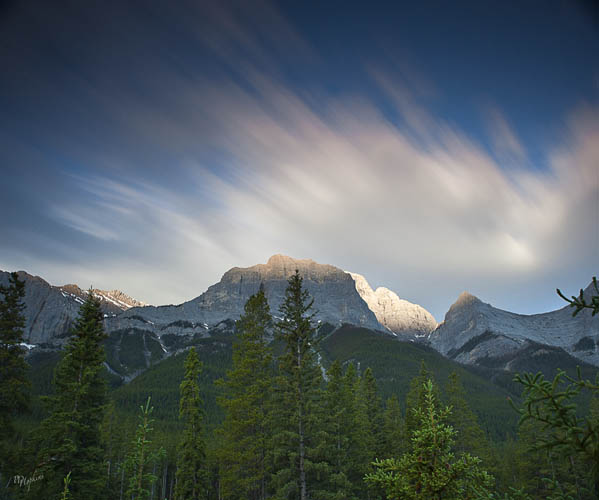This is an early morning photo taken from our rear deck in Canmore. I was enjoying a first coffee for the day when I observed that the clouds were moving swiftly across the sky. It looked like a good opportunity to test a new photographic filter I had acquired, so I set up my camera on its tripod and began experimenting. The filter I used is a neutral density 9-stop filter. This filter reduces the rate of light entering the camera lens by the equivalent of reducing the aperture by 9 f-stops. Because the rate of light entering is impeded, it is possible to get long exposures even in broad daylight. Why do that?
With a long exposure, in this case 50 seconds I was able to capture the movement of the clouds. The effect is to blur and streak the clouds because the camera records them continuously on a single image as they move across the sky. A tripod is essential to steady the camera and ensure that there is no other movement during the long period that the shutter is open. Even having finished my first coffee, I couldn’t hold it still for 50 seconds!
An additional feature of a long exposure is that it will increase the saturation of the colours.

The resulting picture takes a little license; the clouds didn’t really look like this. But, it’s a dramatic effect and makes for an interesting photograph. It is not entirely unreal because you can see clouds like this on a day when there are particularly high winds at high altitudes.
